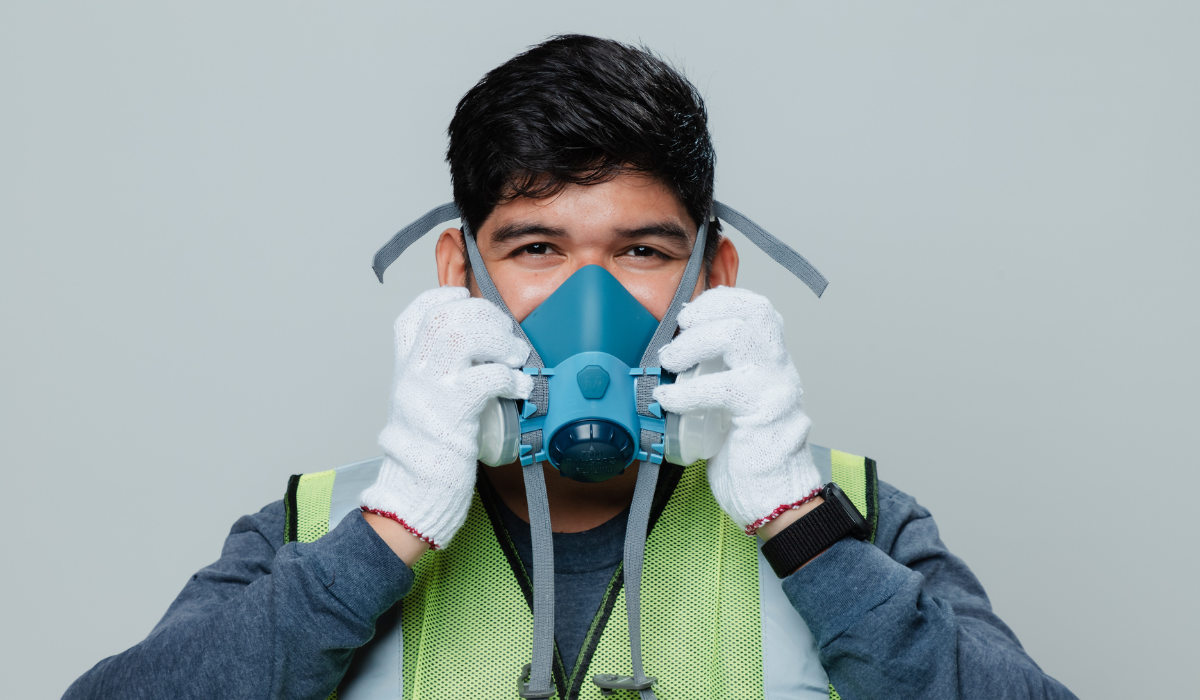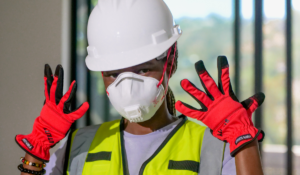In every industrial and construction setting, personal protective equipment [PPE] is an indispensable line of defense against workplace hazards. However, one aspect many employers often overlook is the importance of properly fitting PPE.
Ill-fitting equipment can jeopardize the well-being of on-site workers and undermine the effectiveness of protective gear.
Here, we’ll examine five compelling reasons why on-site workers should use PPE that fits snugly, and why OSHA seeks an update to its PPE standard.
Related Article: Employer’s Guide to Personal Protective Equipment – Eye & Face Protection
Related: Onsite Respirator Fit Testing

OSHA Proposes Rule to Clarify PPE Standard
On July 20, 2023, OSHA unveiled a proposed rulemaking to clarify the PPE standard in the construction industry.
The current standard lacks clarity on the requirement for properly fitting PPE for each affected employee, which is explicitly stated in OSHA’s general industry and maritime standards. The proposed change aims to address this gap, ensuring that PPE fits correctly to safeguard workers from occupational hazards.
The construction industry has long grappled with safety concerns, because standard-sized PPE may not adequately protect physically smaller workers, including women.
The proposed rule aims to eliminate these issues without increasing employers’ costs or compliance burdens.
By aligning the construction industry’s PPE standard with those of general industry and maritime, the revised rule seeks to promote worker safety and health across all genders and sizes.
Assistant Secretary for OSHA, Doug Parker, urged stakeholders to contribute their insights on this critical matter, as the collective effort ensures construction workers receive the appropriate safety gear they need.
In summary;
- OSHA issued a proposed rule that would require construction employers to provide employees with PPE that “properly fits.”
- OSHA states that improperly fitting PPE remains an important issue for smaller workers, particularly some women.
- The proposed rule’s sixty-day public comment period will end on September 18, 2023.
How to Participate & Submit Comments on OSHA’s PPE Standard
If you’re interested in voicing your opinion, you can submit comments and hearing requests online using the Federal e-Rulemaking Portal and reference Docket No. OSHA-2019-0003.
Click here to read the Federal Register notice for more details. Comments and hearing requests must be submitted by September 18, 2023.
OSHA standards on Personal Protective Equipment
- See OSHA’ Regulations for Construction: 95- Criteria for personal protective equipment.
- See OSHA’s PPE standard for the construction industry.
So, why is all of this so important to you and your team? Let’s read on.
5 Benefits of Using Correctly-Fitted PPE
1. Enhanced Protection
The primary purpose of PPE is to safeguard workers from potential hazards such as falling objects, chemicals, noise, and airborne particles.
Well-fitted PPE provides an optimum level of protection by ensuring no gaps exist between the gear and the worker’s body.
Properly fitting respirators, for example, help prevent the inhalation of harmful contaminants, while well-fitted hard hats can effectively deflect falling debris, reducing the risk of head injuries.
2. Comfort and Compliance
PPE that fits comfortably encourages on-site workers to use it consistently.
Ill-fitting gear can cause discomfort and annoyance, leading to workers removing or adjusting the equipment frequently, thereby increasing the likelihood of exposure to hazards. A comfortable fit contributes to better compliance, ensuring workers keep their PPE on for the entire duration of their tasks.
3. Prevention of Workplace Accidents
Workplaces with ill-fitting PPE are prone to accidents caused by equipment malfunctions.
Loose gloves, oversized footwear, or improperly adjusted harnesses can impair workers’ ability to carry out tasks effectively and safely. Properly fitted PPE prevents such accidents and creates a safer work environment for all.
4. Enhanced Communication and Awareness
Effective communication among workers is critical for on-site safety.
PPE that fits well ensures that communication devices, such as radios or intercoms, can be securely attached without obstructing speech or hearing.
Additionally, well-fitted gear enables workers to maintain awareness of their surroundings, reducing the risk of tripping or bumping into objects.
5. Prevention of Long-term Health Issues
Ill-fitting PPE can even lead to chronic health problems over time.
For instance, poorly fitted safety shoes can cause foot pain and musculoskeletal issues, while improperly adjusted back support belts may fail to provide the intended lumbar support, leading to back injuries.
Properly-fitted PPE mitigates these risks and promotes long-term occupational health.
Bringing It Together
OSHA’s PPE standard update might seem like a small step, but it’s a critical one, nonetheless.
Ensuring on-site workers use PPE that fits properly is essential for their occupational health and safety. Not only does well-fitted gear offer enhanced protection against workplace hazards, it also contributes to worker comfort, compliance, and communication.
By prioritizing the correct fit of PPE, you can demonstrate a commitment to the well-being of your workforce, fostering a culture of safety and productivity on-site.
Remember, it’s not just about having the right gear; it’s about having gear that fits right.
***
About Worksite Medical
In most cases, OSHA requires medical surveillance testing, and at no cost to employees.
Worksite Medical makes that program easier with mobile medical testing.
We conduct on-site respirator fit tests, as well as audiometric exams, pulmonary function tests and heavy metal lab work, right on your job site. We also keep accurate, easy-to-access medical records for your convenience. You’ll keep your employees at work, and stay ahead of OSHA inspections.




